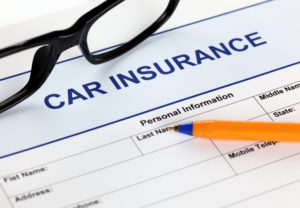The long term outlook for automobile insurance in Canada
1 June 29, 2018 at 9:24 am by Peter Morris In a recent online article, Canadian Underwriter magazine asked the question, Is the sun setting on auto insurance in Canada? In my view, it may be late afternoon for the automobile insurance market, but I think it will be a while yet before the sun fully sets on this line of business.
In a recent online article, Canadian Underwriter magazine asked the question, Is the sun setting on auto insurance in Canada? In my view, it may be late afternoon for the automobile insurance market, but I think it will be a while yet before the sun fully sets on this line of business.
Although automobile insurance premiums represent a smaller share of total insurance premiums today than they did twenty years ago, they still account for more than half of the insurance market. While there may continue to be an erosion in auto insurance’s share of the Canadian insurance market, this line of business will likely continue to be a major part of the market for some time yet. If anything has the potential, though, to knock automobile insurance off its perch as the dominant line of business for the Canadian insurance industry, it is the technology of autonomous cars.
According to figures supplied by the Office of the Superintendent of Financial Institutions, automobile insurance accounted for 61% of the market back in 1999. Last year, automobile insurance accounted for 53% of the market. As noted by Joel Baker, President and CEO of MSA Research, it isn’t that the automobile market is shrinking. In fact, the sector is continuing to grow. But the market for all other lines is growing faster. Since 1999, total automobile insurance premiums have grown by 22% (from $14.3 billion to $17.4 billion) whereas insurance premiums for all other lines have shot up by over 67% (from $9.2 billion to $15.4 billion).
As with any line of business, the size of the automobile insurance market is governed by the total amount paid in losses. Claims costs take the lion’s share of any premium dollar. In setting an insurance premium, whether for automobile insurance or any other type of insurance, an insurer will start with the expected claims cost and will then add a loading to cover its selling and administrative expenses and – for stock companies at least – a profit factor as well.
Starting with automobile claims costs, there are ways to reduce these costs. Such measures include tort reform, changes to the Accident Benefits schedule, efforts to reduce distracted driving and efforts to combat insurance fraud. Selling and administrative expenses can also be reduced by various means, including the use of block chain technology. None of these measures, however, will cause the total automobile insurance sector to fade into oblivion.
Self-driving cars, on the other hand, may have the potential to virtually eliminate automobile accidents. Among other things, these cars don’t daydream, they don’t experience road rage, they don’t talk on the phone, they don’t drink and drive, they don’t stunt drive, and they don’t get into arguments with their passengers. All they do is focus on driving. And they do this using some very sophisticated technology. This is not to say self-driving cars will never get into an accident. Accidents have already happened. But I think it’s fair to say self-driving cars are much better at driving than us mere mortals. As self-driving cars take over the roads, the frequency and severity of automobile accidents could fall to near zero.
When self-driving cars become a significant presence on Canadian roads, the need for, and the cost of, automobile insurance will drop considerably and may even one day disappear altogether. For insurers, this will bring about significant downsizing but, given the historically poor underwriting results of this line of business, it may cause the valuation of insurance companies to rise. As for brokers, there will also be significant downsizing but, unlike insurers, there could also be a degradation in business valuations.
Having said all that, until the day comes that self-driving cars are commonplace, my guess is that automobile insurance will continue to be a major part of the insurance marketplace.
Note: By submitting your comments you acknowledge that insBlogs has the right to reproduce, broadcast and publicize those comments or any part thereof in any manner whatsoever. Please note that due to the volume of e-mails we receive, not all comments will be published and those that are published will not be edited. However, all will be carefully read, considered and appreciated.


Self driving cars if have low chance of getting into accidents. These cars should also have low insurance premiums since the chances are greatly lowered